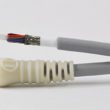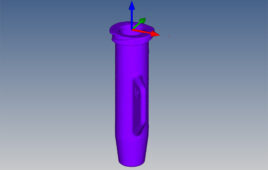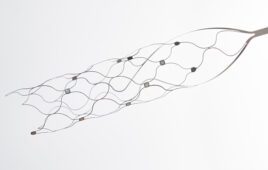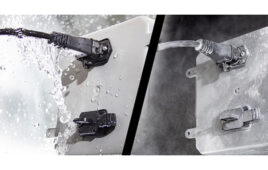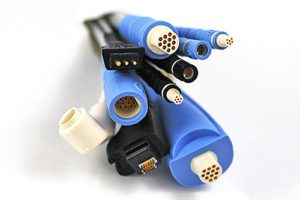
[Image from Omnetics]
Connectors are used in EEG or other diagnostic devices. The connector size, pin count and wiring help prevent signal degradation and low-quality information about a patient, according to Omnetics.
“The connector and cable must be designed to meet the output capacity and resistance of each type of equipment and each signal format it carries,” Stanton said.
How does it work?
Connectors act as the meeting point for cables and instruments.
“Connectors are the interface between the cables and the instruments they serve,” Stanton said. “In additional to different voltages and current flow, each instrument often uses different electrical signal processes to provide the best quality flow of data and information to the other units that need it.”
Connectors have pins to help maintain flexibility and low resistance. Spring pins are made from tempered beryllium copper and can slide into smaller solid tubular sockets within a connector body. Connector pins that are micro-size are placed in a 1.27 mm pitch. Nano-size connectors are 0.635 mm in size.
Pins made from different materials help the connectors have different characteristics. For example, pins and sockets plated with nickel and gold help connectors reduce wear. The back of each pin or socket has ruggedized attachment methods that allow for permanent wire or solder lead attachment to mating elements.

